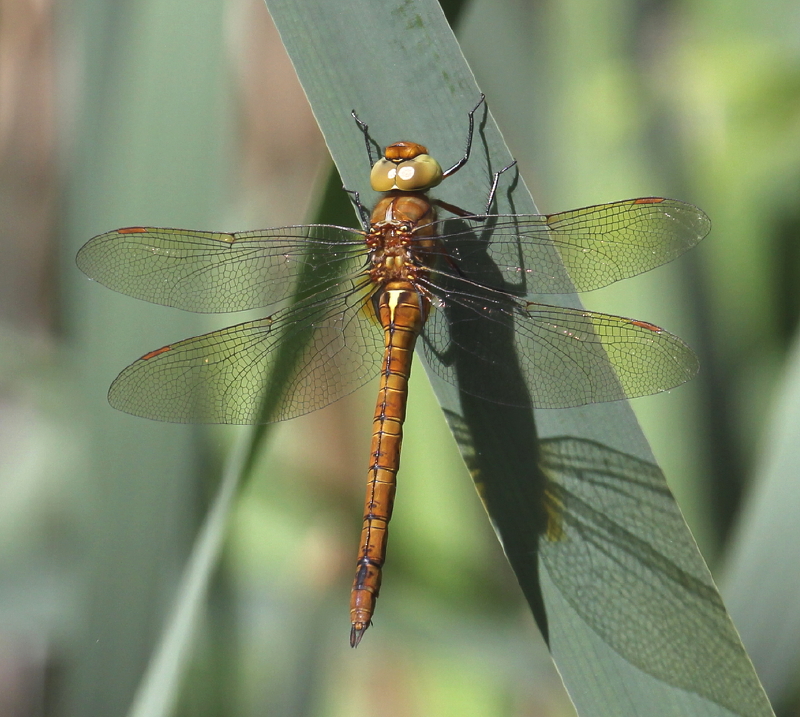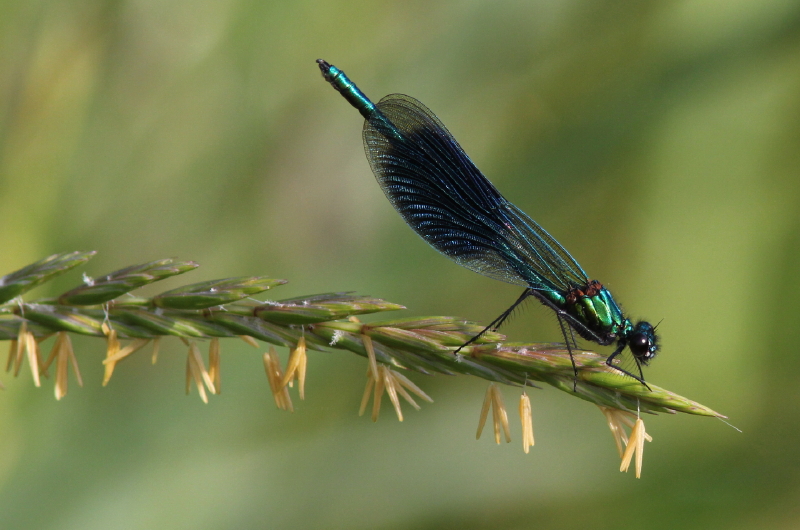

The diversity of habitats and wildlife in the National Park creates its special magic, and is key to its environmental importance. Without clean and abundant water these habitats wouldn’t exist. Improving water quality in the Broads has been key to encouraging rare creatures which live here, like the Norfolk hawker dragonfly and the swallowtail butterfly - both found nowhere else in this country.
The Broads Authority logo is a dragonfly for a good reason. Six rivers and over 60 broads (shallow lakes) and other areas of open water, woodland and grazing marsh all provide different habitats and support rare wildlife with something in common - they all love wetlands.

You may have spotted some of these beauties darting about the water. Did they stay still for long enough to take a closer look?
Download our handy guide to the 13 species of Dragonflies and Damselflies found in and around the National Park to help you tell dragonflies from damselflies (PDF).

One of our largest and rarest dragonflies is the Norfolk hawker. In Britain it has always been scarce, although at the beginning of the 20th century it is thought that the Broads supported thriving populations. Since the early 1980s habitats have been restored, grazing marshes have been protected and water quality has improved. The Norfolk hawker has spread steadily, re-colonising former sites and currently it is most often found in the fens and grazing marshes of the Broads. They like slow-flowing dykes and ditches where water soldier plants grow.

The Banded demoiselle damselfly is a large metallic damselfly with fluttering, butterfly-like wings. They’re around 4.5cm long and can be spotted between May – Sep.
Males have a metallic blue body with dark blue-black spots across outer parts of the wings. Females have a metallic green body with translucent pale green wings. Look out for them on warm, sunny days.
Look out for them on warm, sunny days. You may spot Norfolk Hawkers and other dragonflies at NWT Hickling Broad, RSPB's Strumpshaw Fen Nature Reserve, Wheatfen Nature Reserve and Crome's Broad within How Hill Nature Reserve. You’ll only spot Norfolk hawkers between May and mid to late July.

Dragonfly eggs are laid into open water, plant material or organic debris and they hatch into aquatic larvae after a few weeks or months. The larval stage lasts from a few months to seven years, depending on species. Larvae feed on small animals, even tadpoles and small fish, and when fully grown they crawl out of the water and up the stem of a plant, usually at night. The casing of the larva splits open and the dragonfly pulls itself out, pumps up its wings and sits while these dry and harden. As a flying insect most dragonflies live for between three to eight weeks.
For further information see the British Dragonfly Society
Do tag us in your dragonfly photos on social media: Facebook, Twitter, Instagram.